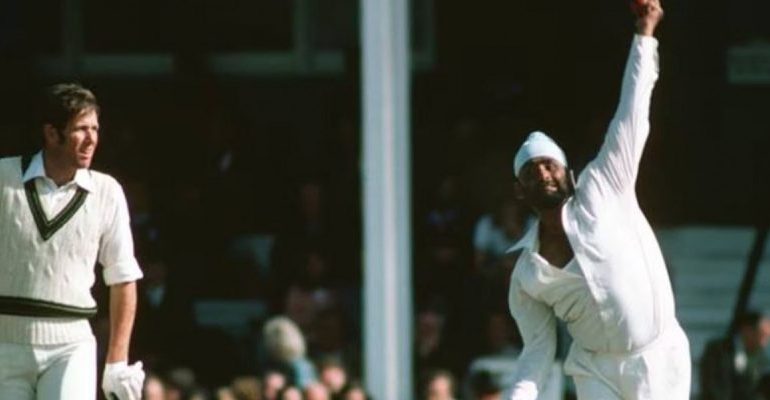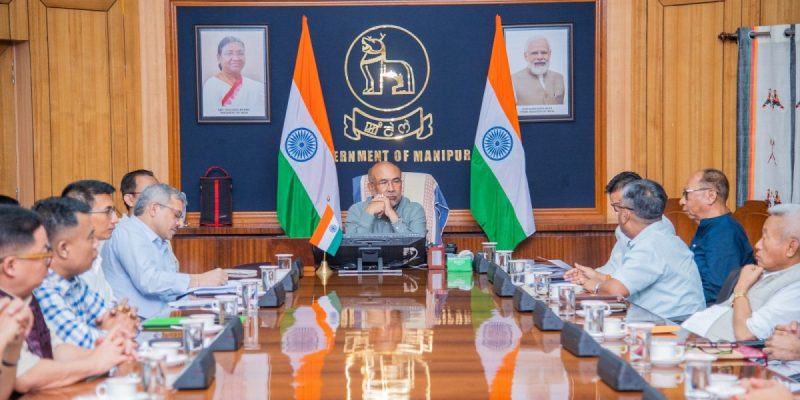Bishan Singh Bedi Bowled to Deceive but, Frank and Big-Hearted, Was the Least Deceptive of Men

There is a certain genus of cricketers – an elite of the elite – who are not only supreme at their skill but somehow seem to embody it altogether. Shane Warne wasn’t just leg spin’s greatest exponent; to bowling, he somehow brought the full force of his vibrant personality. Wasim Akram wasn’t merely the left-arm pace bowler supreme, but an encyclopedist of the craft, the master of all its aspects and dimensions.
Bishan Singh Bedi formed part of this club. He was left-arm slow bowling. He was its greatest champion and its most joyous ambassador. He bowled it on the field; he bowled it in his head; he bowled it into eternity. Once you saw him, he became the benchmark, the reference point for all other practitioners. He wakened you to its possibilities, and once wakened you never forgot them. More than 40 years have elapsed since he bowled, but he led me on to other favourites like Ravi Shastri, Daniel Vettori and Rangana Herath, and I fancy I still see him when I watch Ravi Jadeja, or Mitchell Santner. He also brought a unique spirit to cricket – an expansiveness and chivalry. He bowled to deceive but, frank and big-hearted, was the least deceptive of men. To face him must have been like having your pocket picked then being given your wallet back.
Three times did Bishan tour Australia: as a young man in 1967-68, as a colourful guest in the Rest of the World XI in 1971-2, and as captain and guru in 1977-78. On that last trip, Indian brought their fabled four spinners, as complete an ensemble as has equipped any team: not just their skipper but gnomic Prasanna, crafty Venkat, and Chandra, sui generis. We tend to remember that Chandra took 12 on a dark, pebbly pitch at the MCG, but Bishan also took 12…in Perth…at the WACA. Can you credit it? The world’s slowest bowler on the world’s fastest pitch in the world’s breeziest ground. To a boy, as I was, this was a kind of revelation: how much subtlety and variety could be wrung from a physique that testified to an enjoyment of earthy pleasures, an approach so seemingly artless, and an arc like an angler’s cast. It was intensified by Bishan’s seeming indifference to the rest of cricket. He hoicked earthily; he treated fielding as a bit of a chore. But in an over of Bishan’s, he made the world stand still, almost on tip-toe. The ball took so long in its path, time enough for thoughts to rush through a batter’s head; yet it was almost always a cardinal error to commit too soon.
Beaten in two squeakers, India just lost that series – imagine had they pulled it off, more than 40 years before Virat Kohli’s men of 2018-19. Remarkably, perhaps, I suspect that few Australians would have begrudged them. More powerful teams have visited our shores, but none so completely charming: valiant Mohinder, soulful Vishwanath, suave Vengsarkar, loveable Kirmani. It is incredible to think how long they stayed, all summer, and how far they travelled, through Mt Gambier. They came to my home town, a white bread industrial city called Geelong, where they trussed up the local XI. They felt like part of us, fascinating house guests, whom you’d have been happy to stay forever. Who of us in Australia had ever seen a patka before, such as those Bishan coiled around his head? Mind you, he could have bowled in a trilby and been just as entrancing.
It’s no fluke, I think, that Bishan is the subject of some of cricket’s best photographs. There was a feeling of a mystery to be unlocked, if you could just stop time long enough to study closely. There’s Ken Kelly’s vivid close-up, with the signature detail of Bishan imparting to the ball with his right thumb a last unconscious nudge into his left hand. There’s Adrian Murrell’s study of him warming up, only the whites of his eyes visible, as though lost in tantric contemplation. There’s Patrick Eagar’s side-on snap at Lord’s which captures Bedi connected to the ground only by the outside of the toe of his left boot, like a hot air balloon straining at its moorings. Seeing an Eagar sequence of Bedi in a copy of MCC Masterclass so inspired another young Sikh, Monty Panesar, that he committed to a lifetime in the same genre.

Bishan Singh Bedi. Photo: Shared on X by @SonuSood
Something about the very memory of Bishan pricks you about directions the game has taken. Can you conceive of him in an auction? He was not to be bought and sold. Can you imagine the fatuity of putting a number and his name on the back of his shirt? It would have been like an explanatory caption on the Mona Lisa. He also belonged also to a now-forgotten species of cricketers – those rebel souls of the 1970s who were often at loggerheads with their administrative classes. Bishan was the Indian counterpart of Ian Chappell and Dennis Lillee in Australia and John Snow and Tony Greig in England. Today’s cricketers, memorable and exciting as they may be, are in the main pampered yes men, who never speak out of turn, lest they upset a brand, roil social media. They are represented by agents and unions, firewalled by entourages. Imagine the courage it once took to resist cricket’s overlords, its self-constituting national monopolies, not least the stern and reproving Board of Control for Cricket in India – to be one-out against leviathan, usually running the gauntlet of the press, and in doing so courting the suspicion of the public.
Suresh Menon’s wonderful biography, Bishan: Portrait of a Cricketer, collates a host of confrontations with the BCCI. During one Nagpur Test, for instance, the BCCI stuck Bishan’s team not in a hotel but in an MLA Hostel in which only he and the team manager had running water. Bishan remonstrated so fiercely with the local official that he was arraigned to appear before a BCCI disciplinary committee – sitting, by the way, in a five-star hotel in Mumbai. Having been reprimanded, Bishan learned that the BCCI had not booked his return tickets to Chandigarh, and there were no seats on the train. So it was that the captain of India travelled to a Duleep Trophy game bunked in a luggage rack for 1400 km, then took a bus the last 250 km.
I’ve called him Bishan here advisedly, because I did have the good fortune to know him, just a little, although with him it always felt like more. Such was his immediate warmth; it was like being wrapped in an instant hug. ‘You and Ray Robinson!’ he said when we were first introduced in England 15 years ago. ‘My favourite Australian writers!’ And much as I liked being recognised, I was the more chuffed by his reference to Ray Robbie, likewise my favourite, and something of a personal hero. Bishan had a capacity for immediate, easy intimacy, and a fund of earthy opinions expressed with an absolute unguardedness, whether about his reverence for the Nawab of Pataudi Junior, his ambivalent relations with Sunil Gavaskar, or his utter contempt for administrators generally. No coaching sinecure or commentator’s blazer for Bishan. He was absolutely his own man, proudly Indian, utterly cosmopolitan. Had the Australian Arthur Mailey not said already said it, after being criticised for advising the Englishman Ian Peebles in 1930, the remark could have come from Bishan: ‘Spin bowling is an art, and art is international.’
How dearly beloved he was too. I once had a night out with him at Delhi Golf Club, where he received a non-stop stream of well-wishers and petitioners as though they were personal friends – only to quietly confide that he had only the vaguest idea whom half of them were. When we came out, I thought that my driver was going to faint with excitement. ‘Naveen, I’m so sorry to have kept you so late,’ I said as we returned to the city. ‘Sir!’ he said. ‘It was Bishan Bedi.’ I had to pinch myself too. Good heavens, it was.
Gideon Haigh has been a journalist for almost four decades, has published more than 40 books and contributed to more than 100 newspapers and magazines. He is also co-host of the podcast Cricket, Et Cetera.







